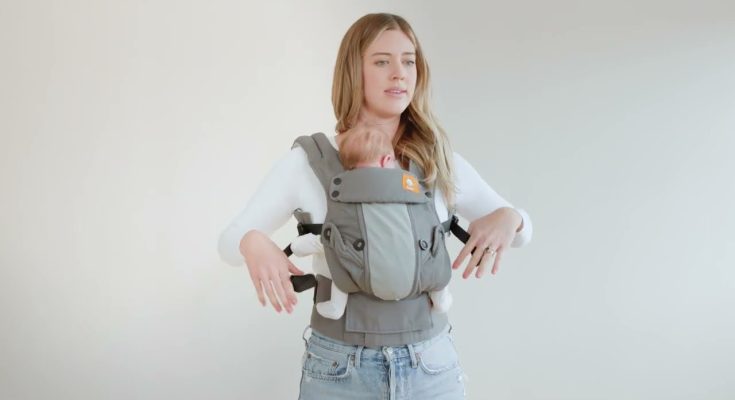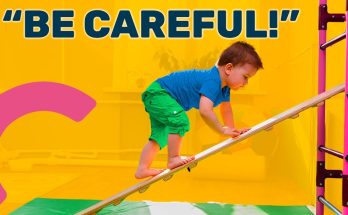Babywearing is an age-old practice that has been embraced by cultures worldwide. It’s an incredibly beneficial and practical way to bond with your newborn while keeping your hands free for other tasks. Baby carriers, such as those from Baby Tula, are designed to provide comfort, support, and safety for both the parent and the baby. Whether you’re new to babywearing or just looking for guidance on the best way to wear your newborn, understanding the proper techniques is crucial. This article will guide you through the basics of babywearing, focusing on how to wear a newborn in a baby carrier properly.
Why Babywearing?
Before diving into the practical details, it’s helpful to understand why babywearing is so valuable. For both parents and babies, babywearing offers multiple benefits:
- Promotes Bonding: Physical closeness fosters bonding and emotional connection between you and your baby, which is essential for their emotional development.
- Soothes the Baby: The gentle motion and security of being close to the caregiver can calm a crying baby, making it a great option for fussy moments.
- Hands-Free Convenience: Wearing your baby allows you to multitask around the house, run errands, or even go for a walk while still having your baby close and safe.
- Supports Physical Development: Properly positioning a newborn in a carrier can help with healthy hip and spine development, reducing the risk of conditions like hip dysplasia.
Now, let’s focus on how to use a baby carrier to safely and comfortably wear your newborn.
Choosing the Right Baby Carrier for Newborns
Not all baby carriers are suitable for newborns, so it’s important to choose one designed to accommodate a baby from birth. Baby Tula offers soft-structured carriers that are ergonomic, easy to use, and versatile for different stages of your baby’s growth. Look for the following features when selecting a carrier for a newborn:
- Adjustable Fit: Ensure the carrier can be adjusted to fit your baby’s small body securely while providing ample support for their head and neck.
- Cushioning for Comfort: Newborns have delicate skin, so choose a carrier with soft, breathable fabric that won’t irritate your baby’s skin.
- Supportive Waistband and Straps: The carrier should evenly distribute your baby’s weight across your body to prevent strain on your back and shoulders.
Baby Tula carriers, specifically the Free-to-Grow Carrier, are an excellent option for newborns, as they feature adjustable settings to create a snug and comfortable fit for babies as small as 7 pounds.
Proper Positioning of a Newborn in a Baby Carrier
The key to babywearing is ensuring your baby is positioned correctly to support their development and comfort. Follow these guidelines for proper positioning when wearing a newborn in a carrier:
- The “M” Position for Their Legs: Your baby’s legs should be in a natural “M” position, with their knees higher than their hips and their legs spread comfortably around your torso. This positioning supports healthy hip development and helps avoid stress on your baby’s spine.
- Support the Head and Neck: Newborns cannot yet support their heads on their own, so make sure the carrier provides adequate support. The carrier should have a high back panel to support your baby’s head and neck, especially if they fall asleep in the carrier.
- Close Enough to Kiss: The baby should always be close to your body, with their head at or slightly above your chest level. This position keeps your baby within easy reach and is crucial for maintaining airflow, reducing the risk of suffocation, and promoting bonding.
- Chest-to-Chest Position: For the newborn stage, it’s ideal to wear your baby in an inward-facing position, with their chest against your chest. This provides the best comfort and support for both you and your baby while allowing you to respond quickly to their needs.
How to Put a Newborn in a Baby Carrier
Wearing your newborn properly starts with safely placing them into the carrier. Follow these steps to ensure you’re doing it right:
- Prepare the Carrier: Before putting your baby in the carrier, make sure all straps are adjusted to fit your body. Check that the waistband is securely fastened around your hips and that the shoulder straps are loosened enough for easy access.
- Position Your Baby: Gently scoop your baby into the carrier, ensuring their legs are in the “M” position and their head is resting against your chest. If the carrier has a head support panel, make sure it’s positioned correctly to provide neck support.
- Secure the Carrier: Once your baby is safely positioned, secure the straps across your back, adjusting them so the carrier feels snug but not tight. The carrier should be close to your body, ensuring that your baby’s weight is evenly distributed. The waistband should sit above your hips for added support.
- Check for Safety: Always check that your baby’s airway is clear. Their chin should not be tucked to their chest, as this can restrict breathing. Make sure their face is visible, and they are not too hot or too cold. You should also be able to kiss the top of their head without straining.
Tips for Comfortable Babywearing
Babywearing can be a pleasant experience for both you and your baby if done properly. Here are some additional tips for comfort:
- Keep the Baby Upright: A vertical, chest-to-chest position helps with digestion and minimizes the risk of reflux or discomfort.
- Use a Small Blanket or Swaddle: If your newborn is particularly small, use a soft swaddle or blanket to help support their body inside the carrier. This can create a snug environment that mimics the womb.
- Take Breaks: Even though babywearing is hands-free, it’s important to listen to your body. Take breaks as needed to adjust your posture and prevent strain on your back and shoulders.
- Start Slow: If you’re new to babywearing, start with shorter periods, allowing both you and your baby to adjust. Gradually increase the time spent wearing your baby as you become more comfortable.
Final Thoughts: The Joy of Babywearing
Wearing your newborn in a carrier is a wonderful way to bond, soothe, and support your baby while keeping your hands free for other tasks. By choosing the right carrier, ensuring proper positioning, and practicing safe babywearing techniques, you can make the experience comfortable and beneficial for both you and your little one. Baby Tula offers a variety of carriers designed to support newborns in a safe, ergonomic, and comfortable way, making it easier than ever to enjoy the many benefits of babywearing.
Remember, babywearing isn’t just about convenience—it’s about nurturing your baby’s growth and development, giving them the comfort and closeness they need to thrive. With a little practice, both you and your baby will be enjoying the joys of babywearing in no time!



